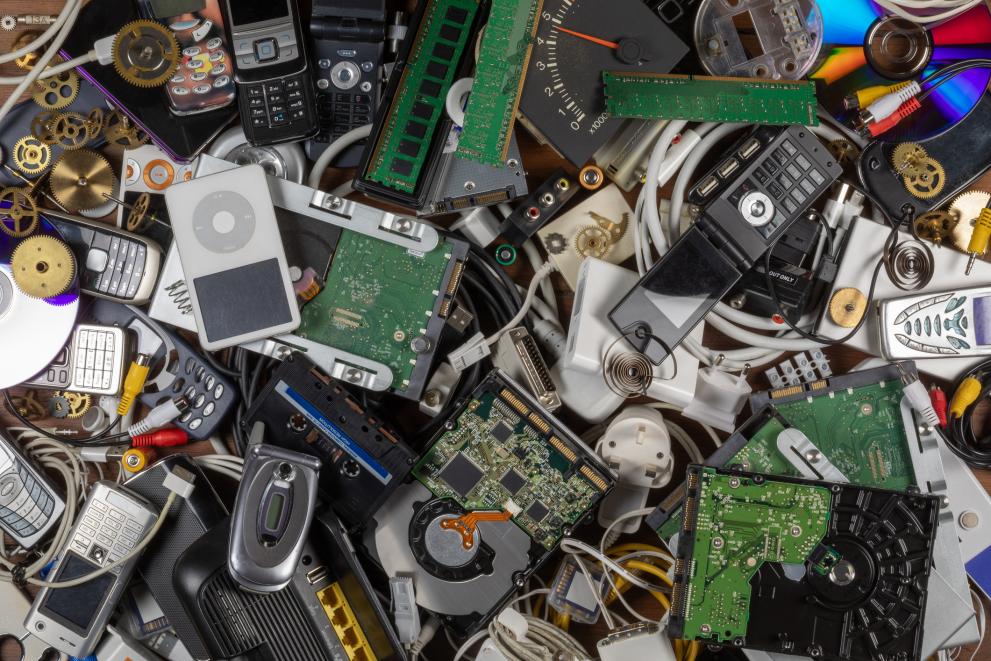The study found it to be relevant, coherent, proportionate, in line with the subsidiarity principle, and consistent with other EU initiatives.
Today, the Commission published an evaluation of the Waste Electrical and Electronic Equipment (WEEE) Directive.
EU legislation on WEEE management has been in place for over 20 years, setting minimum requirements for collection and proper treatment to reduce the impact of WEEE on the environment and human health. The evaluation underpins that the initial objectives of the WEEE Directive remain highly relevant for the EU.
In general, good progress has been made on the environmentally sound handling and proper treatment of all types of waste electrical and electronic equipment in the EU. The amount of WEEE collected increased significantly between 2012 and 2021.
However, the Directive has not fully achieved its intended outcomes. The amount of WEEE collected is mainly linked to increasing amounts of such equipment being sold in the EU.
Nearly half of the WEEE generated is still not being collected, and the majority of Member States do not reach the collection target set out in the Directive.
Furthermore, the WEEE Directive has had a limited impact on enhancing material recycling and recovery. Currently, only about 40% of WEEE is recycled in the EU.
Key findings
The WEEE Directive has been found to be relevant, coherent, proportionate, in line with the subsidiarity principle, and consistent with other EU initiatives. It has had positive effects on the performance of all actors involved.
The evaluation identified five shortcomings of the Directive; related to its scope, collection of WEEE, recovery of critical raw materials (CRMs), harmonisation in Extended Producer Responsibility (EPR) schemes, and treatment requirements across the EU.
It has also been found to be coherent, proportionate, in line with the subsidiarity principle, and largely consistent with other EU initiatives. The WEEE Directive has also had positive effects on the performance of all actors involved.
- Scope of the Directive: The current scope does not adequately address new CRM-rich waste streams from renewable energy and digital technologies, such as wind turbines, which will reach the end of their lifecycles and be disposed of in the coming decades.
- Collection of WEEE: In 2022, only Bulgaria, Latvia, and Slovakia met the 65% collection target of WEEE, based on the amount placed on the market in the previous three years. Economic factors, illegal trade, lack of infrastructure, and low public awareness were barriers to reaching the collection target. Additionally, differing interpretations and calculation methods further complicated collection efforts.
- Recovery of CRMs: Low collection of WEEE results in a lost opportunity to recover valuable materials, in particular critical raw materials such as copper, rare earth elements, gallium, germanium or tungsten. Additionally, the current recycling targets in the Directive did not effectively encourage the recovery of secondary raw materials.
- Lack of harmonisation of EPR schemes: The Extended Producer Responsibility (EPR) is a principle that obliges manufacturers to manage and cover product end-of-life costs right from the design phase. The evaluation noted a fragmented implementation of EPR schemes across the EU and gaps in the enforcement of EPR obligations, particularly concerning online sellers.
- Inconsistent treatment requirements: Although progress has been made in environmentally sound handling and proper treatment of WEEE, only about 23% of recycling facilities in the EU implement high-quality treatment standards. Improving the quality of recycling could help retrieve greater volumes of valuable secondary raw materials.
Overall, the evaluation highlights the high relevance of collecting and treating increasing electronic waste streams in the EU.
At the same time, a new approach to incentivise improved WEEE collection and treatment to support the development of a secondary materials market in the EU is needed.
Potential measures could include redefining the scope of future WEEE legislation, including green and digital equipment, and mandatory WEEE treatment standards to ensure more comprehensive and effective waste management across the EU.
Next steps
The Commission will now carefully consider the evaluation findings during the revision process for the WEEE Directive, as part of the Circular Economy Act.
Quote
Jessika Roswall, Commissioner for Environment, Water Resilience and a Competitive Circular Economy, said:
"We must unlock the potential of electronic waste to advance the clean transition, decarbonise and strengthen the circular economy. The evaluation of the WEEE Directive demonstrates where improvements are needed, notably in terms of recovering critical raw materials. It is essential that we address these gaps to better protect the environment, boost the EU's competitiveness, and strengthen our economic security”.
Background
Waste from electrical and electronic equipment (WEEE) includes a large range of devices such as mobile phones, computers, televisions, fridges, household appliances, lamps, medical devices and photovoltaic panels.
In 2022, 14.4 million tonnes of electrical and electronic equipment were put on the market, and 5 million tonnes of e-waste were collected. WEEE represents the EU's fastest-growing waste stream, increasing by about 2% annually.
The current WEEE Directive and related secondary legislation:
- Requires the separate collection and proper treatment of WEEE;
- Sets targets for separate collection and recovery, and recycling;
- Implements the polluter pay principle through an extended producer responsibility (EPR) system requiring producers to pay for collection, transport and treatment of WEEE;
- Aims at reducing administrative burden by requiring the harmonisation of national EEE registers and the reporting format, thus strengthening the EU internal market.






